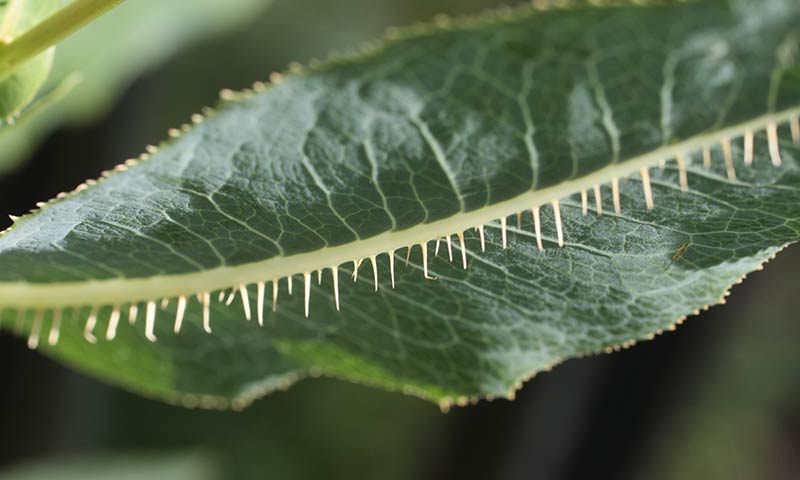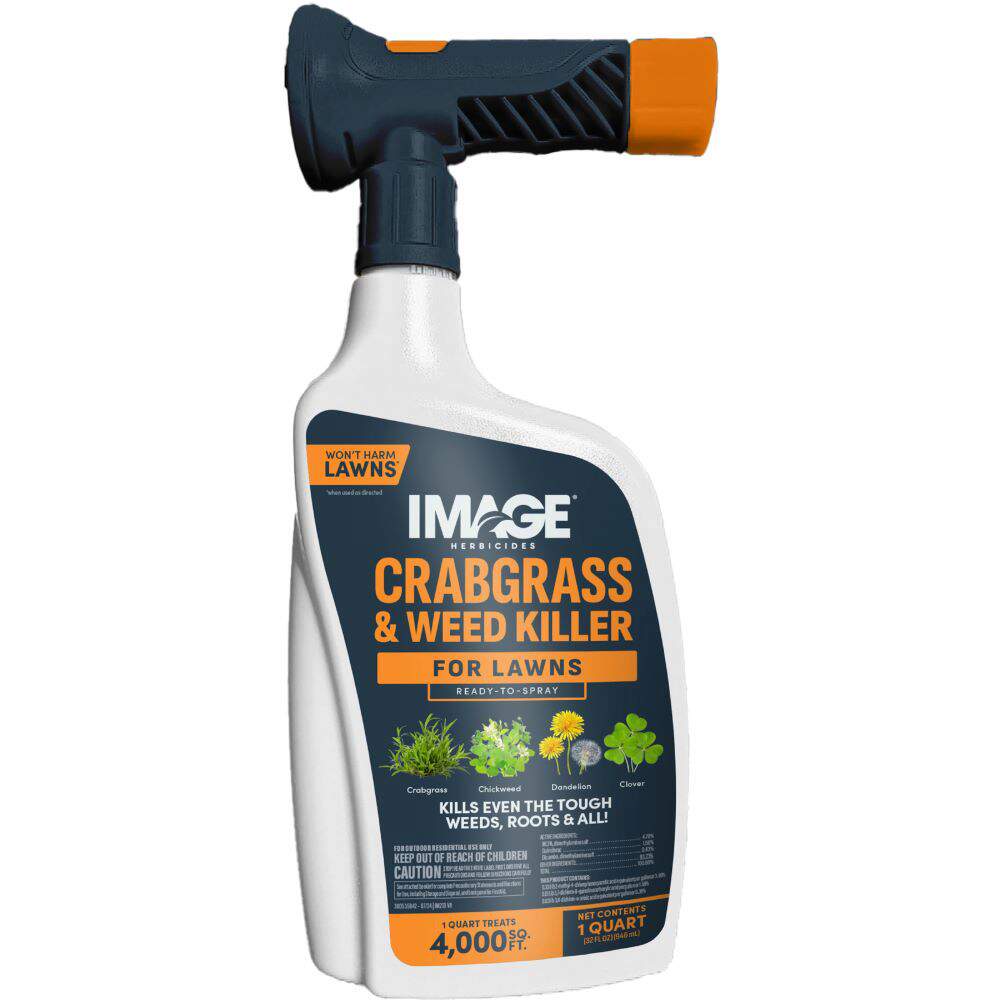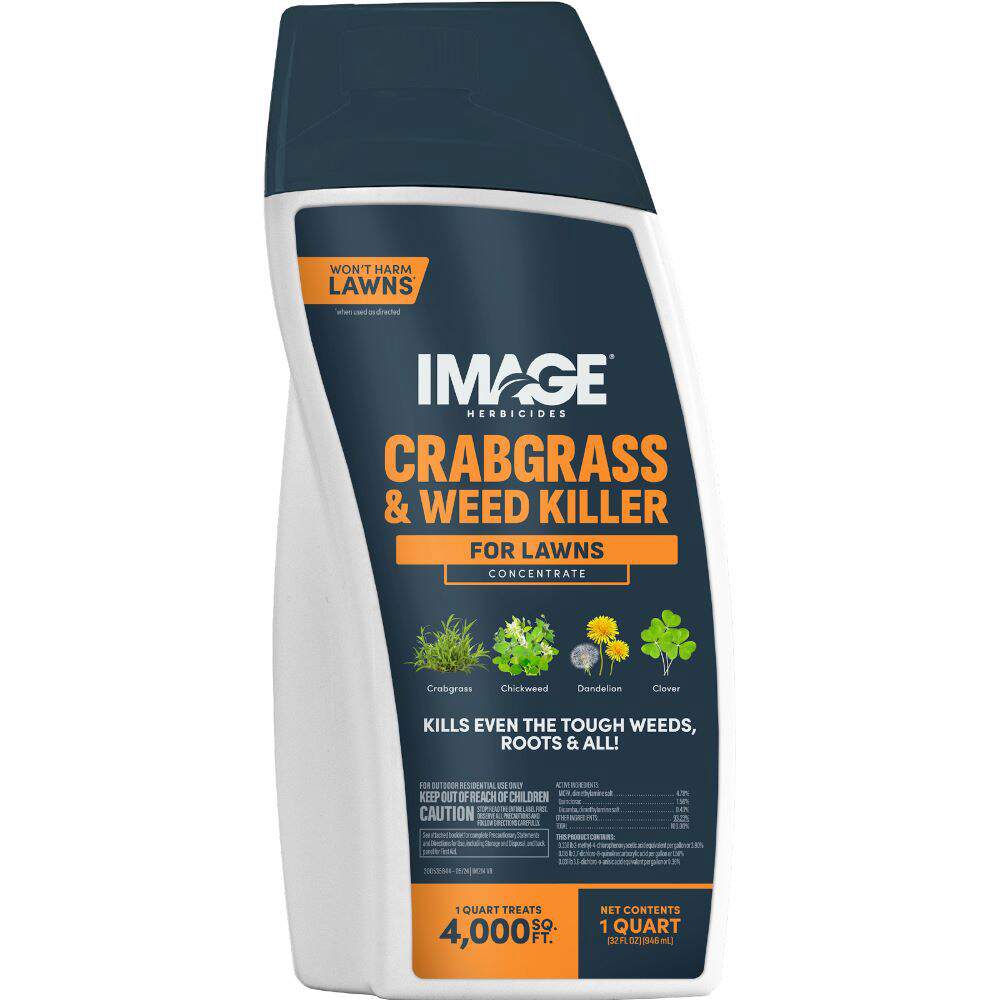HOW TO IDENTIFY PRICKLY LETTUCE
As its name suggests, prickly lettuce is known for the bristly prickles that line the edges and the prominent white midvein on the undersides of its dandelion-like leaves. The stalkless, blue-green leaves clasp the stem. The leaves grow 2 to 14 inches long, getting smaller toward the plant's top. One of several plants known as "compass" plants, prickly lettuce aligns its leaves north and south, perpendicular to the midday sun.
When young, this broadleaf weed's long, narrow leaves grow in a basal rosette, similar to dandelion weeds. But as the plant matures, a hollow stem grows from the rosette's center. The branching stem reaches up to 6 feet tall, bearing pale yellow, 1/2-inch blooms from spring through fall. The flowers look like small, sparse dandelion blooms.
An annual or biennial, prickly lettuce lives either a single season or two seasons before it sets seed and dies. The flowers produce tufted, dandelion-like seed heads that disperse seed on the wind. The leaves, stems and taproot of prickly lettuce emit a milky white sap when broken or cut.
WHERE AND WHY PRICKLY LETTUCE GROWS
Prickly lettuce grows throughout the United States and southern Canada, but stops short of Alaska or far northern realms. Mature stands are common in barren or disturbed areas such as roadsides and fallow fields. A single plant can produce more than 40,000 seeds, which remain viable for up to three years in soil.
Prickly lettuce adapts to a wide range of conditions, but it prefers full sun and nutrient-rich, well-irrigated soil. Well-kept lawns provide ideal conditions for this opportunistic weed's seeds to germinate and establish.
HOW TO CONTROL PRICKLY LETTUCE
When treating prickly lettuce or other lawn weeds, always read product labels and follow instructions thoroughly. Some lawn grasses are sensitive to herbicides, so make sure the label lists your grass type. Avoid newly seeded areas; treat established lawns only. For best results, treat prickly lettuce as soon as small, young plants emerge.
Image Herbicides offer several highly effective liquid products to kill or control prickly lettuce:
- Image Herbicides Crabgrass & Weed Killer for Lawns, available in Ready-to-Spray and Concentrate formulas, kills even tough prickly lettuce — roots and all. Apply this selective post-emergent herbicide when soil is moist and prickly lettuce is actively growing.
- Image Herbicides Weed Killer for Southern Lawns, available in Ready-to-Spray and Concentrate formulas, is ideal for herbicide-sensitive warm-season lawns. This selective post-emergent starts working immediately to kill prickly lettuce down to the roots.
Prickly Lettuce Control Tip: This short-lived weed relies on seed production to perpetuate itself. Diligent mowing and prompt treatment break the cycle and prevent the plant from producing seed.
If you prefer a granular option for post-emergent weed control, turn to Pennington Full Season Weed & Feed 25-0-8 to control prickly lettuce and feed your lawn.
Always read product labels thoroughly and follow instructions, including guidelines for lawn grasses, frequency of applications and seasonal maximums that may apply.
PRICKLY LETTUCE GALLERY

Immature Prickly Lettuce

Mature Prickly Lettuce

Prickly Lettuce Branched Flower Head

Prickly Lettuce Underside

Prickly Lettuce Flowers

Prickly Lettuce Fluffy Seed Head

Prickly Lettuce Seeds




